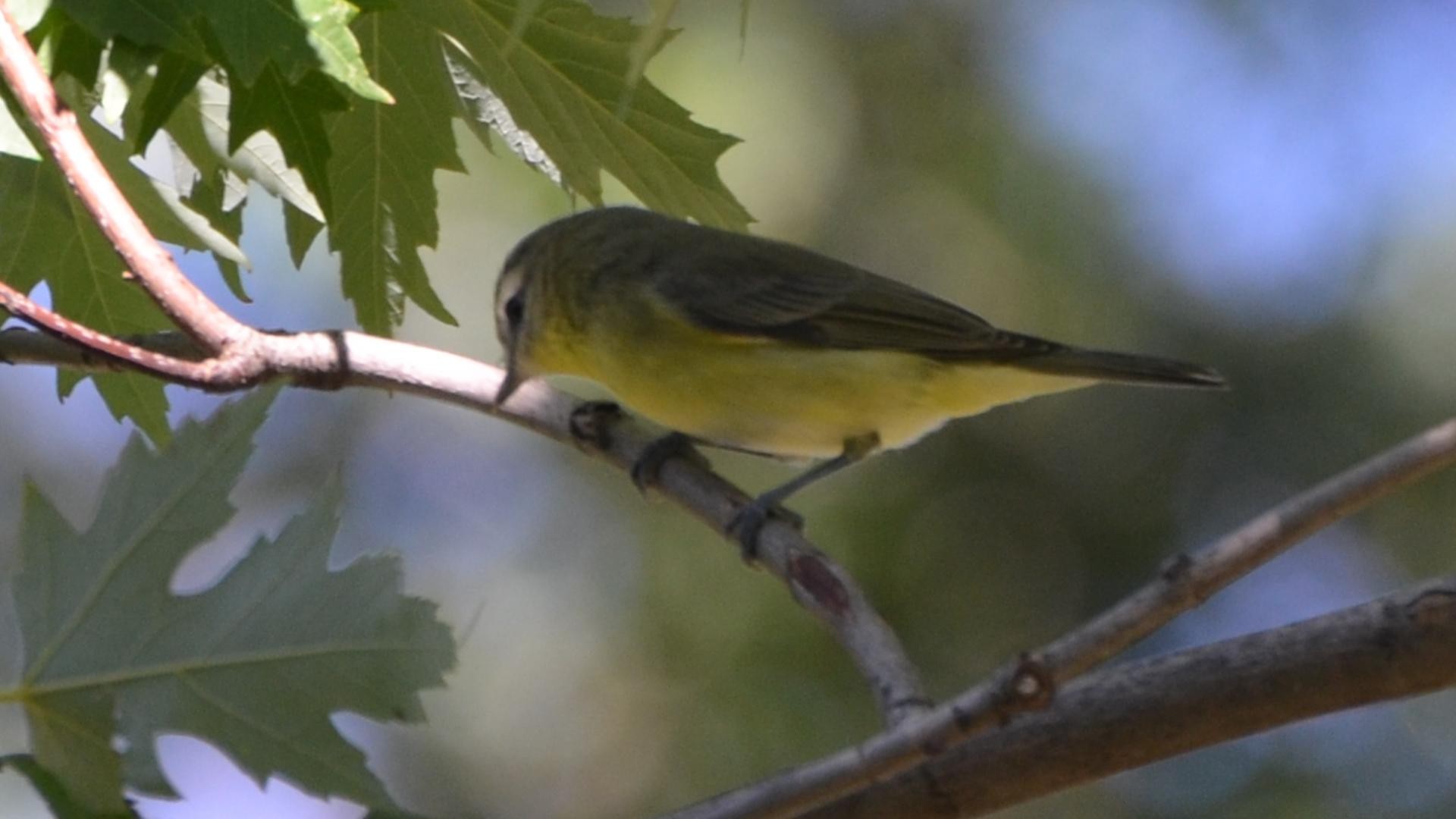Philadelphia Vireo
A species of Vireos Scientific name : Vireo philadelphicus Genus : Vireos
Philadelphia Vireo, A species of Vireos
Botanical name: Vireo philadelphicus
Genus: Vireos
Content
Description General Info
 Photo By Andy Reago & Chrissy McClarren , used under CC-BY-2.0 /Cropped and compressed from original
Photo By Andy Reago & Chrissy McClarren , used under CC-BY-2.0 /Cropped and compressed from original Description
Adults are mainly olive-brown on the upperparts with yellow underparts; they have dark eyes and a grey crown. They have no wing bars and no eye ring. There is a dark line through the eyes and a white stripe just over them. They have thick blue-grey legs and a stout bill. The Philadelphia vireo is similar in appearance to the warbling vireo, but can be reliably distinguished by having much yellower underparts, and dark lores. 
Size
12-13 cm (4.75-5.25 in)
Colors
Brown
Yellow
Bronze
Gray
White
Life Expectancy
8 years
Nest Placement
Tree
Clutch Size
3 - 4 eggs
Incubation Period
1 brood
Number of Broods
11 - 13 days
Nestling Period
14 - 15 days
Feeding Habits
Philadelphia Vireo's diet mainly consists of caterpillars, spiders, weevils, beetles, wasps, bees, ants, bugs, moths, flies, and occasionally fruit. They forage in the upper tree canopy, gleaning prey from foliage or catching insects in flight, and infrequently feed on berries and seeds during migration and winter.
Habitat
Philadelphia Vireo's preferred habitats are secondary-growth woodlands rich in deciduous trees like aspen, birch, and alder. Its breeding grounds typically feature thickets alongside streams and dense understories with trees such as cherry and ash, occasionally including conifers. Migration and wintering habitats mirror their breeding environments and extend to gardens, mangrove forests, and shaded farmlands at elevations up to 5,250 feet.
Nest Behavior
Philadelphia Vireo selects the site and builds the nest, with some help from the male. Nest building coincides with the breeding season, with the female laying eggs and both parents participating in the care of the eggs and young.
Nest Characteristics
Philadelphia Vireo's nest is usually found near the top of small trees, about 8-65 feet up, and secured in a forked branch. It's made of bark strips, grasses, seed tufts, feathers, beard-moss lichen, and lined with pine needles and grass blades, averaging 2.8 inches across.
Dite type
Insectivorous
General Info
Feeding Habits
Bird food type
Bird Feeder Type

Small Hopper

Small Tube Feeder
Behavior
During late spring, philadelphia Vireo arrive to establish territories, with both sexes participating in territory defense and courtship rituals such as quivering wings and bill snapping. They form socially monogamous pairs and engage in less aggressive defence compared to their Red-eyed Vireo counterparts, yet still guard territories up to 10 acres. Males exhibit vigilant mate-guarding throughout courtship to egg-laying, using threat postures and attacks to keep rivals at bay. Both parents share in feeding and caring for the young. In non-breeding seasons, philadelphia Vireo forage in mixed-species flocks within their habitats, displaying adaptive social behavior.
Species Status
Not globally threatened.

 Photo By Andy Reago & Chrissy McClarren , used under CC-BY-2.0 /Cropped and compressed from original
Photo By Andy Reago & Chrissy McClarren , used under CC-BY-2.0 /Cropped and compressed from original Scientific Classification
Phylum
Chordates Class
Birds Order
Perching birds Family
Vireos Genus
Vireos Species
Philadelphia Vireo